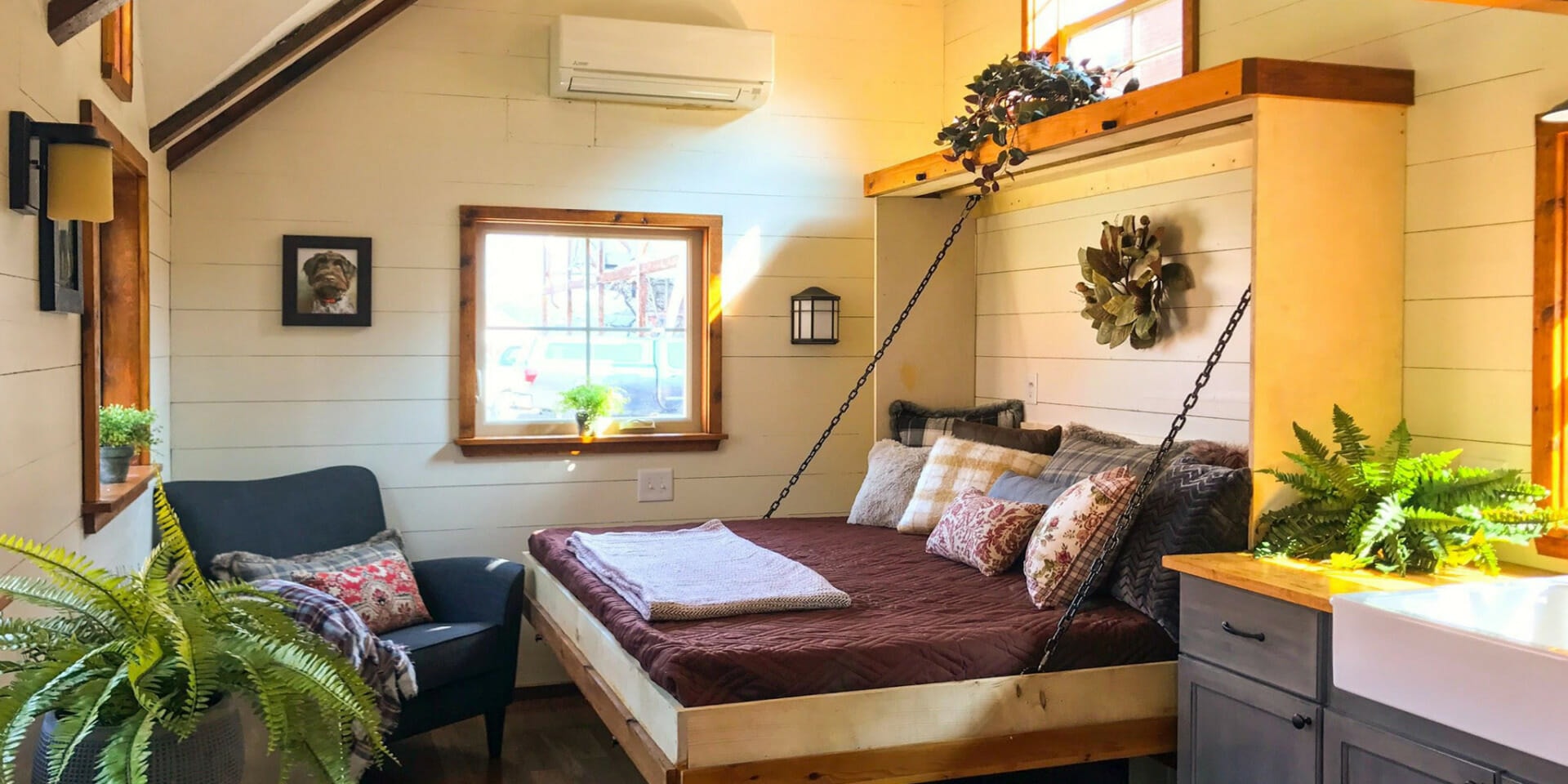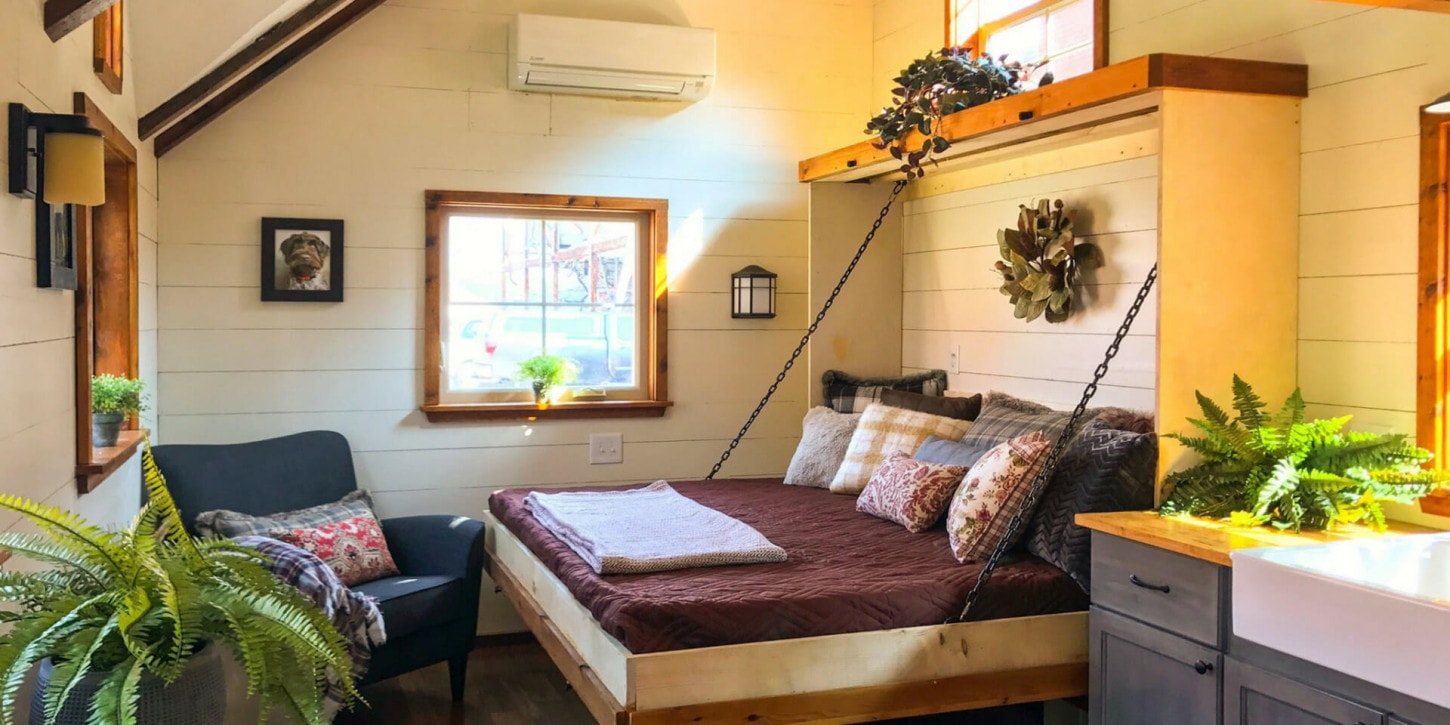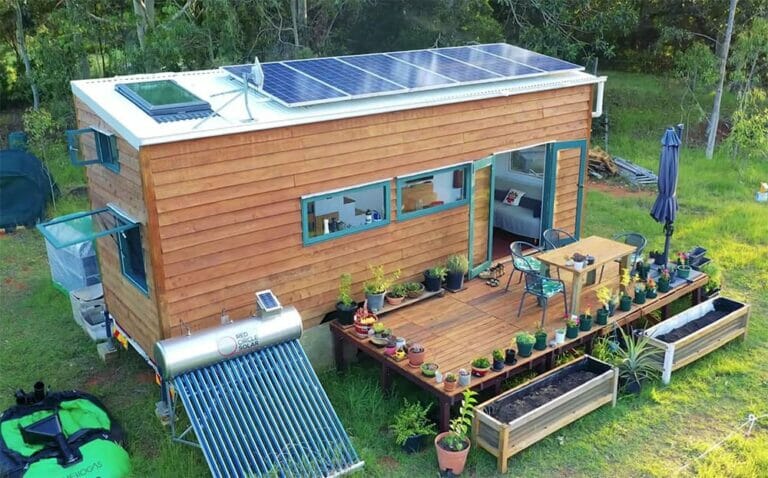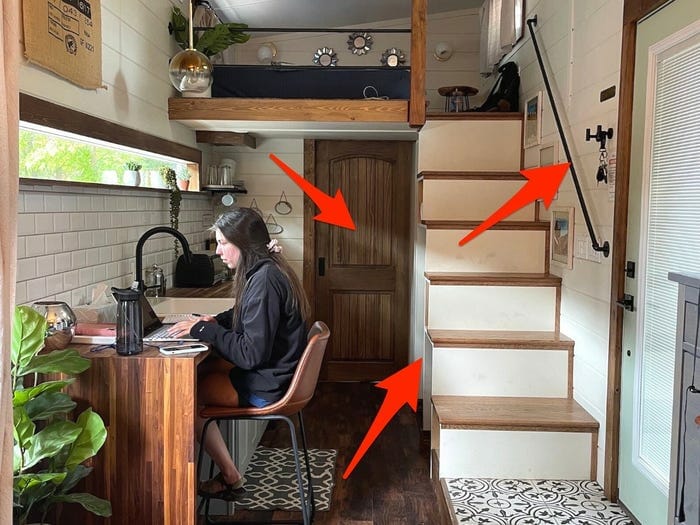
Have you ever wondered what it’s like to live in a tiny house? Well, one crucial aspect that comes to mind is the heating and cooling system. What’s the heating and cooling like in a tiny house? Let’s dive in and explore this topic!
When it comes to tiny houses, space is limited, which means the heating and cooling options might differ from those in conventional homes. But don’t worry, there are plenty of innovative solutions to ensure comfort and coziness, no matter the size of your dwelling.
In this article, we’ll uncover the various heating and cooling options available for tiny houses. From portable heaters and air conditioners to mini-split systems and clever insulation techniques, we’ll explore everything you need to know to keep your tiny house just the right temperature. So, let’s get started and discover the world of heating and cooling in tiny houses!

What’s the Heating and Cooling Like in a Tiny House?
Tiny houses require efficient heating and cooling systems to maintain a comfortable living environment. Many tiny house owners opt for mini-split systems, which provide both heating and cooling capabilities.
These systems are energy-efficient, compact, and offer precise temperature control. Additionally, some tiny houses utilize radiant floor heating or compact wood-burning stoves for warmth.
For cooling, options include ceiling fans, portable air conditioners, or strategically placed windows for cross ventilation. Proper insulation and ventilation are essential for effective heating and cooling in a tiny house.
Types of Heating and Cooling Systems for Tiny Houses
Tiny houses require unique heating and cooling solutions due to their size and limited space availability. Here are some of the most common options:
1. Portable Electric Heaters and Fans
Portable electric heaters and fans are popular choices for tiny houses due to their affordability and ease of use. Electric heaters come in various sizes and can provide efficient heating, especially in well-insulated tiny houses.
On the other hand, fans can help circulate cool air during hotter months. Despite their convenience, these systems may consume more energy compared to other options.
2. Space-saving stoves and Fireplaces
Space-saving stoves and fireplaces provide a cozy and rustic heating solution for tiny houses. These heating options are often powered by wood and can be used for both aesthetics and warmth.
Consider installing a wood-burning stove or fireplace with proper ventilation to ensure safety and efficient heat distribution within your tiny house.
3. Mini-Split Air Conditioning Systems
Mini-split air conditioning systems, also known as ductless systems, offer efficient cooling in tiny houses. These systems consist of an outdoor compressor unit and one or more indoor air handling units.
Mini-splits are energy-efficient, quiet, and highly customizable, allowing for individual temperature control in different areas of the tiny house. They occupy minimal space and don’t require ductwork, making them ideal for small spaces.
4. Radiant Floor Heating
Radiant floor heating provides a luxurious and efficient heating solution for tiny houses. This system involves installing heating elements beneath the flooring, which radiate heat upward.
Radiant floor heating can be powered by electricity, hot water, or even solar energy. It ensures even heat distribution throughout the tiny house, eliminating the need for space-consuming radiators or heaters.
5. Propane Furnaces and Heaters
If you’re searching for a reliable and compact heating option, propane furnaces and heaters are worth considering.
Propane is a cost-effective fuel source, and these systems can efficiently heat small spaces. Propane heaters come in various sizes, including wall-mounted and portable options, making them suitable for tiny houses with different layouts.
6. Solar-Powered Systems
For those looking to reduce their environmental impact and achieve energy independence, solar-powered heating and cooling systems are excellent choices. Solar panels can harness the power of the sun to generate electricity, which can be used to power electric heaters or air conditioning units. Additionally, solar thermal systems can directly heat water for showers and radiant heating.
7. Hybrid Heating and Cooling Systems
Hybrid systems combine different heating and cooling methods to provide optimal comfort and efficiency. For instance, a hybrid system might consist of a mini-split air conditioning unit paired with a wood stove or radiant floor heating. These systems allow for energy-saving and flexible heating and cooling capabilities, adapting to the changing weather and specific needs of the tiny house.
By exploring these different heating and cooling options, you can choose the system that best suits your tiny house’s design, budget, and climate requirements. Remember to consider the insulation and ventilation of your tiny house as they play crucial roles in maintaining a comfortable indoor temperature.
Efficient Insulation and Ventilation Techniques
Insulation and ventilation are key factors in maintaining a comfortable indoor temperature throughout the year. Here are some tips to ensure optimal insulation and ventilation in your tiny house:
1. High-Quality Insulation
Investing in high-quality insulation is essential for tiny houses, as it helps regulate the temperature and reduces the need for excessive heating or cooling.
Consider using spray foam insulation, which provides an airtight seal and effective insulation properties. Insulate walls, roofs, and floors to prevent heat transfer and maintain a comfortable interior climate.
Benefits of High-Quality Insulation:
– Improved energy efficiency
– Reduce heat loss in winter and heat gain in summer
– Enhanced soundproofing
– Minimize drafts and air leakage
2. Strategic Ventilation
Proper ventilation is crucial in tiny houses to remove excess humidity, prevent condensation, and ensure a healthy indoor environment.
Install vents and fans in the kitchen and bathroom areas to remove odors and moisture. Consider using motorized skylights or windows that can be opened to promote airflow and natural ventilation. Additionally, using energy-efficient fans and ventilators can aid in air circulation without consuming excessive energy.
Benefits of Strategic Ventilation:
– Improved air quality
– Prevention of mold and mildew growth
– Efficient removal of odors and moisture
3. Window Treatments
Window treatments play a significant role in controlling the amount of heat and light entering your tiny house. Use insulating curtains or blinds to prevent heat gain during the summer months.
Consider using reflective window film to reduce heat transfer while still allowing natural light to enter. These window treatments can significantly impact the cooling and heating needs of your tiny house.
By implementing efficient insulation and ventilation techniques, you can create a comfortable living environment in your tiny house while minimizing energy consumption and costs.
Key Considerations for Heating and Cooling in a Tiny House
When choosing a heating and cooling system for your tiny house, there are several factors to consider for optimal comfort and efficiency. Here are some key considerations:
1. Climate
The climate in your region plays a significant role in determining the heating and cooling needs of your tiny house. If you live in a colder climate, prioritize heating systems that can efficiently warm your space during chilly winters. On the other hand, if you reside in a hot and humid climate, consider cooling options that can effectively manage high temperatures.
2. Energy Efficiency
Energy efficiency is crucial in tiny houses to minimize energy costs and reduce environmental impact. Choose heating and cooling systems with high energy efficiency ratings to lower your energy consumption. Look for systems with ENERGY STAR certifications or those that utilize renewable energy sources like solar power.
3. Space Availability
Tiny houses have limited space, so it’s important to consider how much room your chosen heating and cooling system will occupy. Opt for compact and space-saving options, such as mini-split air conditioning units or wall-mounted heaters, to maximize your living area.
4. Budget
Your budget will also influence your choice of heating and cooling systems. Consider the initial cost, installation fees, and long-term maintenance costs when selecting a system that fits your budget. It’s important to strike a balance between affordability and efficiency.
5. Sustainability
If sustainability is a priority for you, explore eco-friendly heating and cooling solutions for your tiny house. Solar-powered systems, hybrid systems, and efficient insulation techniques can significantly reduce your carbon footprint and reliance on traditional energy sources.
6. Long-Term Versatility
When choosing a heating and cooling system, think about its long-term versatility. Can it adapt to changing weather conditions or be easily upgraded to meet future needs? Investing in a system that offers flexibility and scalability ensures that your tiny house remains comfortable year-round.
7. Noise Level
In a small space like a tiny house, noise can significantly affect your comfort. Consider the noise levels produced by different heating and cooling systems and choose options that operate quietly, allowing you to enjoy a peaceful living environment.
By considering these key factors, you can make an informed decision about the heating and cooling system that best suits your tiny house’s unique requirements and your personal preferences.
When it comes to heating and cooling in a tiny house, there are various options available to create a comfortable living environment. From portable electric heaters to solar-powered systems, each solution has its own benefits and considerations.
By understanding the different heating and cooling systems, implementing efficient insulation and ventilation techniques, and considering key factors such as climate, energy efficiency, and space availability, you can ensure that your tiny house remains cozy in any weather.
Whether you choose a traditional method or an innovative solution, finding the right balance between comfort, efficiency, and sustainability will contribute to an enjoyable and sustainable tiny house living experience.
Frequently Asked Questions
Tiny houses are becoming increasingly popular, but many people wonder how the heating and cooling systems are like in these small spaces. Let’s explore some common questions about the heating and cooling in a tiny house.
1. How do you heat and cool a tiny house effectively?
Tiny houses can be heated and cooled efficiently in several ways. One popular option is a mini split system, which consists of an outdoor unit and indoor units placed strategically throughout the house. These units provide both heating and cooling and are highly energy-efficient.
Another option is a portable heater or air conditioner with adjustable settings. These are ideal for smaller spaces and can be easily moved around as needed. Lastly, some tiny houses use radiant heating in the floors, which provides consistent warmth throughout the space.
2. Can you use a traditional HVAC system in a tiny house?
While it is technically possible to use a traditional HVAC system in a tiny house, it may not be the most practical or efficient choice.
Traditional systems require ductwork, which can take up valuable space in a tiny house. Additionally, they are designed for larger homes and may be overkill for a small space. However, if you have a larger tiny house or prefer the comfort of a traditional HVAC system, it can be installed with a smaller unit and customized ductwork to fit the space.
3. What about insulation in a tiny house? Is it important for heating and cooling?
Insulation is absolutely crucial in a tiny house when it comes to heating and cooling. Proper insulation helps to regulate temperatures and prevent heat loss or gain.
By ensuring your tiny house is well-insulated, you can reduce the amount of energy needed to heat or cool the space.
This can not only save you money but also make your tiny house more comfortable throughout the year. Consider using insulation materials such as spray foam or rigid foam panels, and pay special attention to insulating windows and doors.
4. How do you handle air circulation in a tiny house?
Air circulation is important in a tiny house to maintain good indoor air quality and even temperature distribution.
To promote air circulation, you can install ceiling fans or use portable fans strategically placed throughout the space.
Using windows strategically can also help to circulate fresh air. Opening windows on opposite ends of the house creates a cross breeze, allowing for better air circulation. Additionally, using an air purifier can help to filter the air and improve overall indoor air quality.
5. Are there any eco-friendly options for heating and cooling a tiny house?
Absolutely! Many people who choose tiny houses are also conscious of their environmental impact, so there are eco-friendly options available for heating and cooling.
Solar heating and cooling systems are becoming increasingly popular in tiny houses. These systems utilize solar panels to generate energy for heating and cooling purposes.
Additionally, using natural ventilation techniques, such as strategically placed windows for cross ventilation, and insulation made from eco-friendly materials can further reduce your tiny house’s environmental footprint.
Living in a tiny house means you have to be smart with your heating and cooling. When it’s cold outside, insulation, efficient heating systems, and using the sun’s energy can keep you warm.
In the summer, good ventilation, shading, and insulation can help keep your tiny home cool. It’s important to find the right balance to stay comfortable throughout the year.
Tiny houses can have different heating and cooling options, but it’s essential to consider their size and energy efficiency.
Insulation, heat sources, ventilation, and clever design choices all play a role in keeping a tiny house cozy or cool. By making smart choices and finding the right balance, you can enjoy a comfortable living space in your tiny home, whatever the weather.


